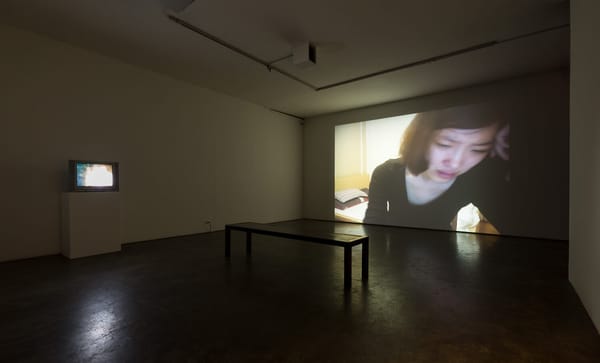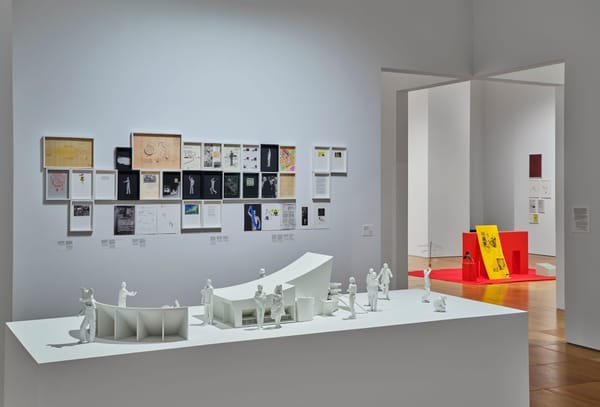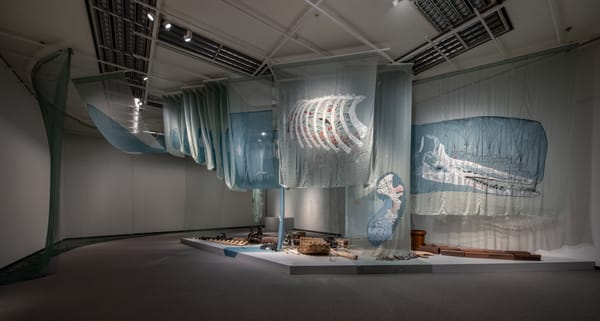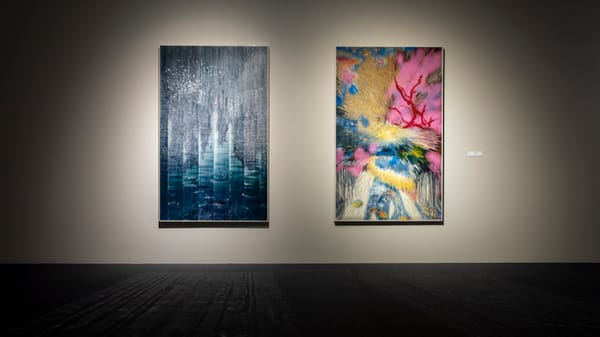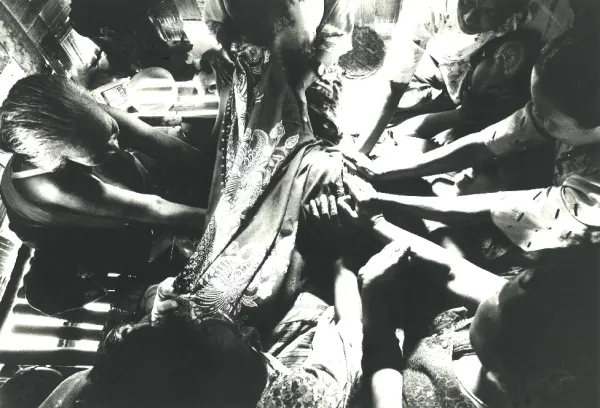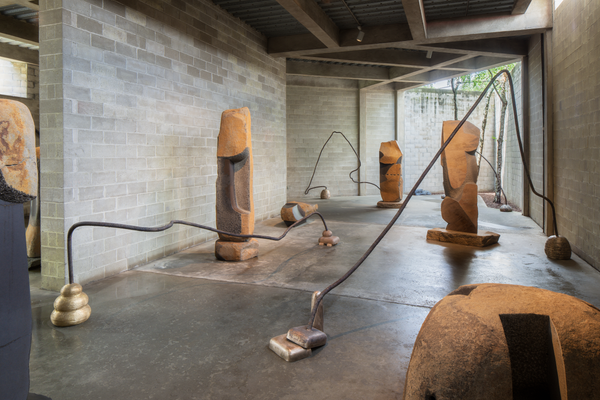Shows
Huma Bhabha and Alberto Giacometti at the Barbican Centre
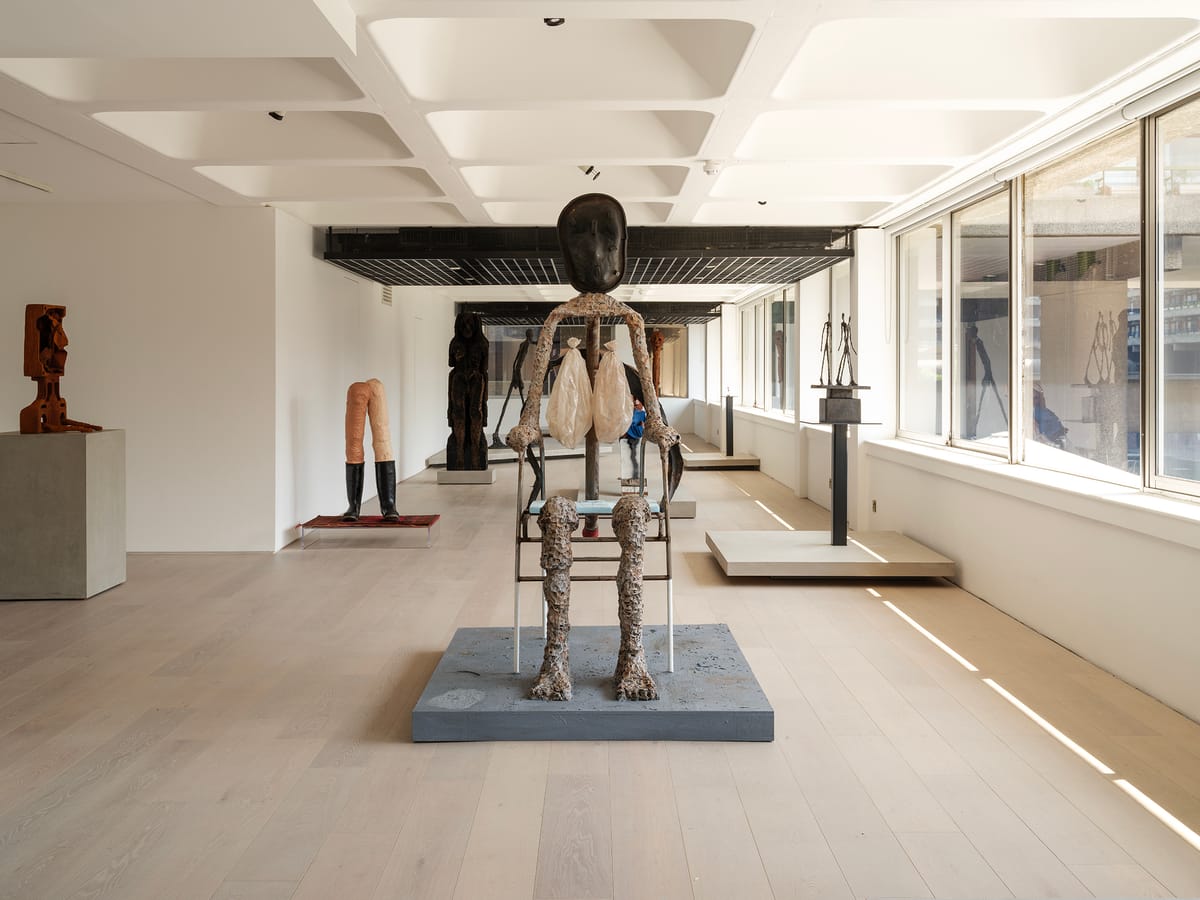
Huma Bhabha x Alberto Giacometti
Encounters: Nothing is Behind Us
The Barbican Art Gallery
London
8 May–10 Aug, 2025
The Barbican Centre’s newly launched exhibition series, “Encounters,” opened with a bold pairing—Swiss modernist sculptor Alberto Giacometti and Pakistani American mixed media artist Huma Bhabha. This inaugural chapter, subtitled “Nothing is Behind Us,” was curated by the Barbican’s head of visual art Shanay Jhaveri and the Fondation Giacometti’s director of collections Émilie Bouvard, with support from the Kiran Nadar Museum of Art in Delhi. It brought together two artists separated by time, geography, and context, yet profoundly connected by their interest in the human condition. The show explored these interconnections by pairing Giacometti’s sculptures—mostly postwar—with Bhabha’s contemporary works from the 2000s to now.
Best known for his elongated, attenuated figures, Giacometti sought not to create idealized bodies but to translate his own fractured perceptions of people and space into sculptural forms. Having lived through both World Wars, his work became a study of endurance in the face of extreme physical and psychological fatigue. Stripped of volume, poised between movement and stasis—his figures intend to convey an empathetic observation of humanity rather than a solely physical recreation. Walking Man I (1960), for instance, with its ghostly propulsion, and Standing Woman (1957), rooted and statuesque, anchor this exhibition in a midcentury reckoning with trauma and reconstruction.
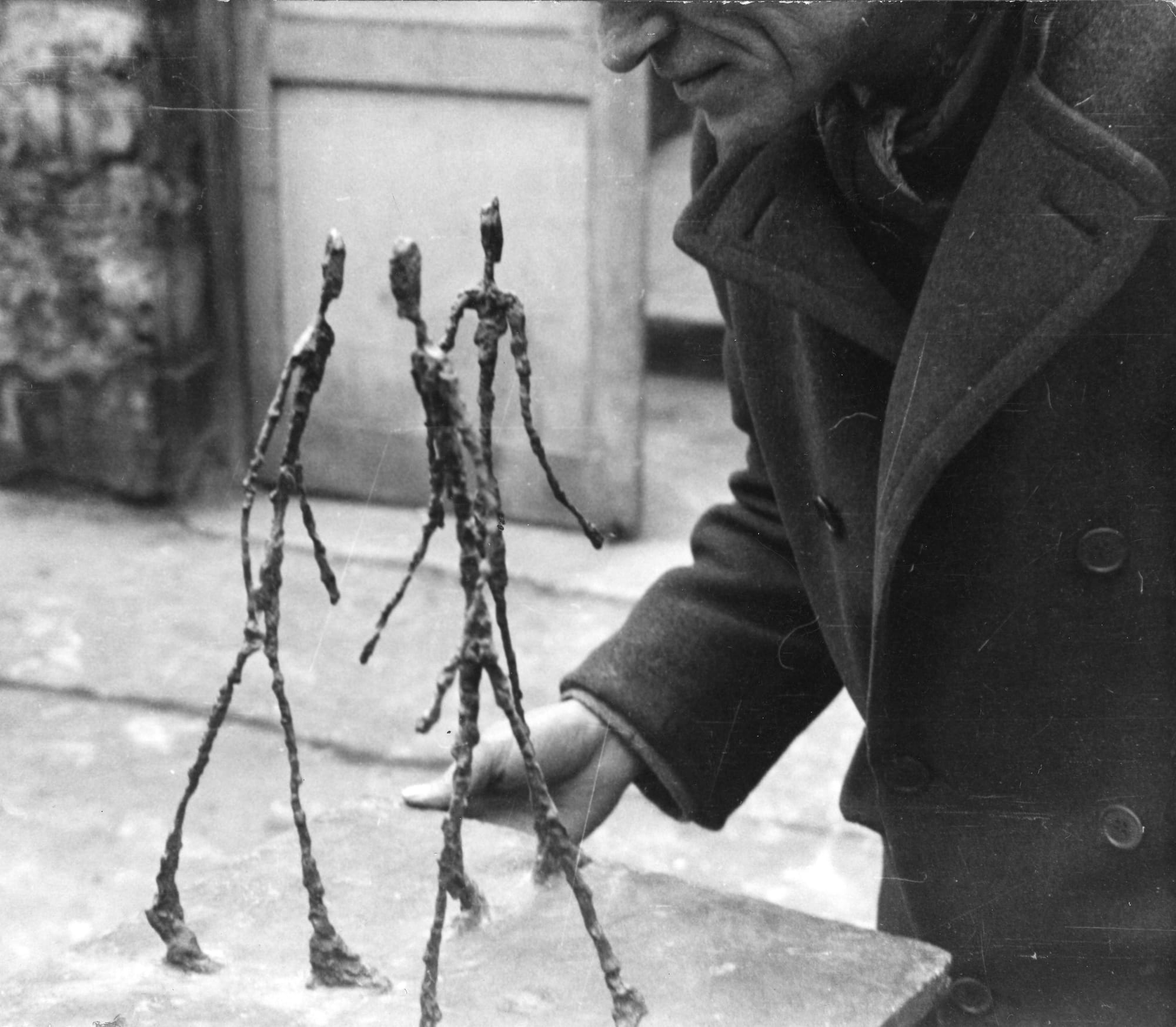
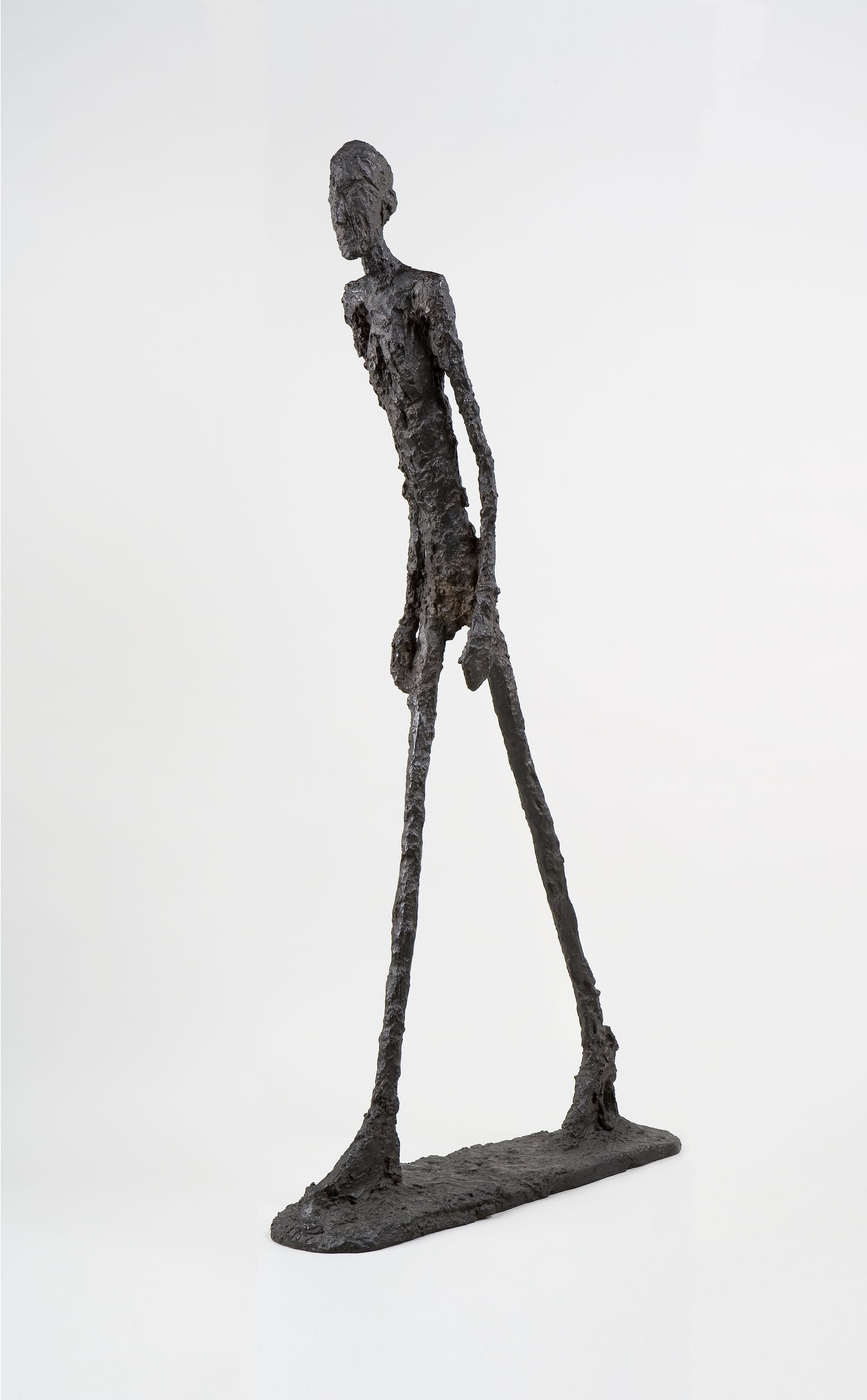
In contrast—but also in deep sympathy—Huma Bhabha’s practice draws on a hybrid palette of materials and references. Working with cork, clay, styrofoam, cast bronze, and found detritus, she creates imposing totems that feel both ancient and post-apocalyptic. Her recent sculpture, Lodger (2024), appears here in dialogue with Giacometti’s Man with a Windbreaker (1953)—both pedestal mounted pieces, but where the latter is stripped bare and moulded to resemble rocky terrain, Lodger exudes layers of bodily ruin and sci-fi mythos. Made of saltwater-treated cast iron, the increasingly patinated appearance of the sculpture will change with time and environmental exposure, thus representing a distinct engagement with decay and the ravages of time on the body. Another standout, Mask of Dimitrios (2019), a skeletal seated figure—constructed from found objects, metal pipes and plates, and deflated plastic bags—combines a humanoid face with an almost alien physiognomy, suggesting a body shaped by violence, memory, and survival.
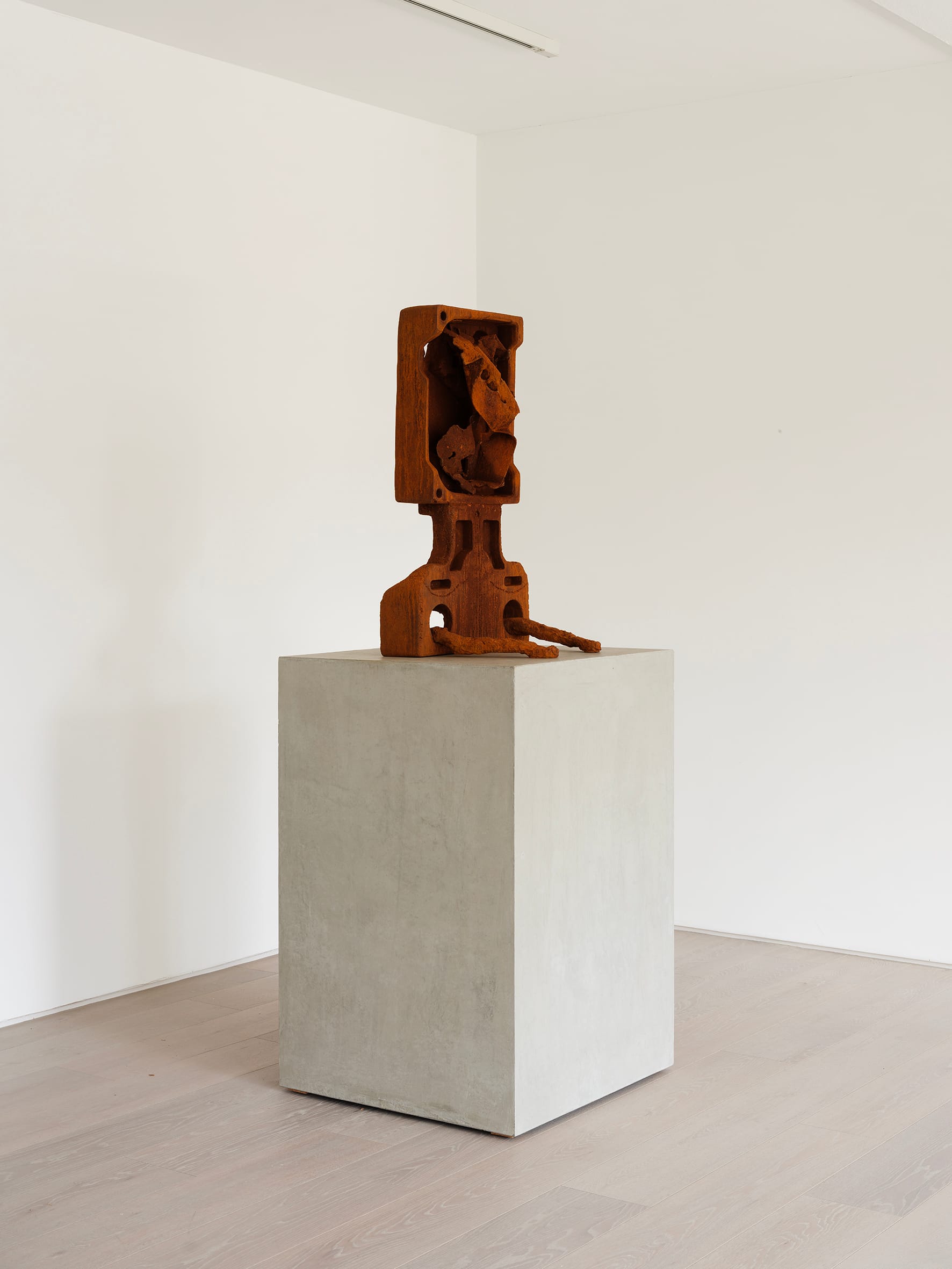
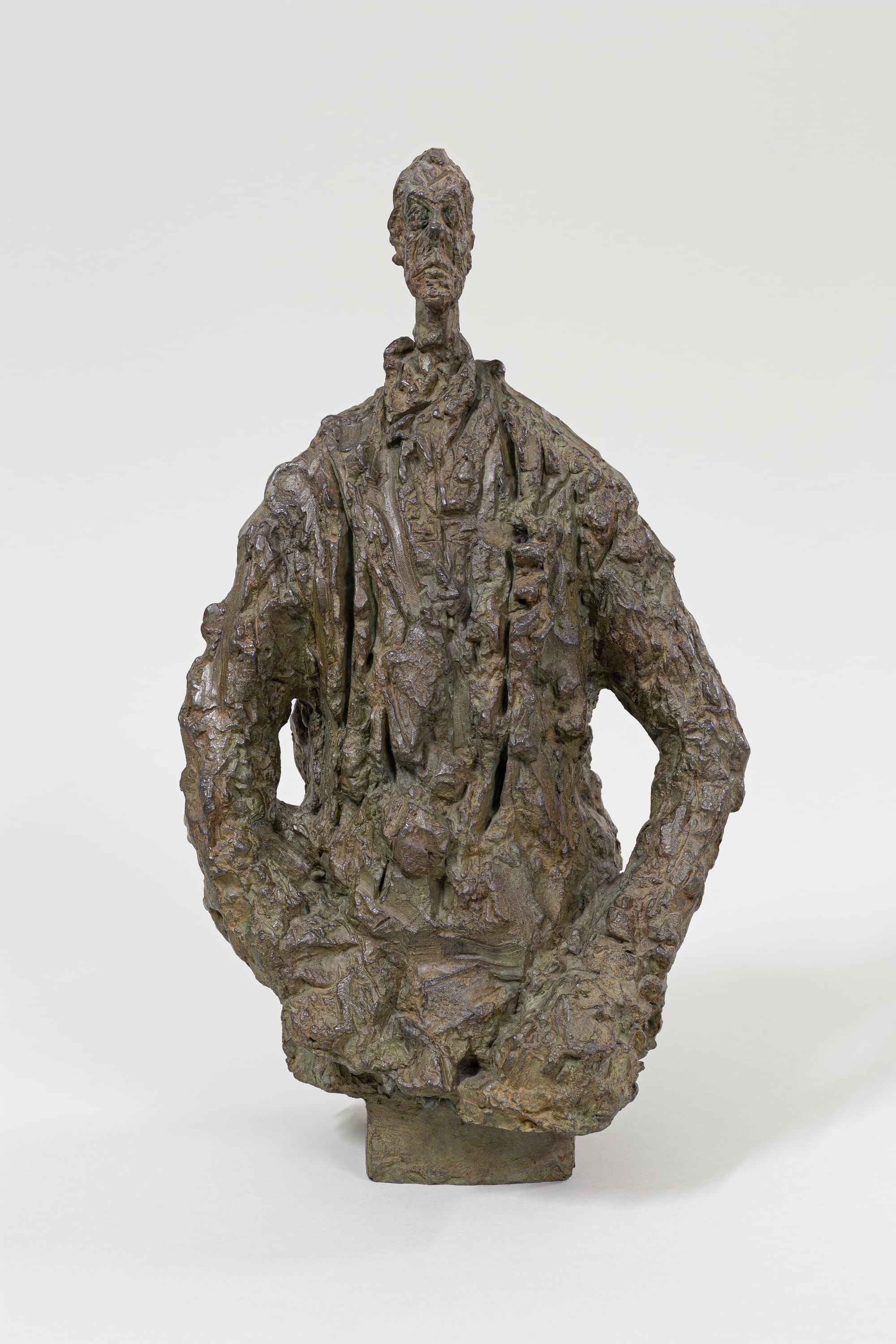
This pairing is not one of direct influence—Bhabha has cited Egyptian sculpture, horror films, and science fiction more than her modernist precedent—but rather of conceptual convergence. Both artists are gripped by the human body as a site of existential inquiry. Bhabha’s figures may seem more monstrous and deformed, but they share Giacometti’s deep investment in ambiguity: are these figures standing in defiance, or collapse? Are they arriving, or departing?
Other Giacometti works in the show include Four Women on a Base (1950), a haunting group of vertical forms that seem to oscillate between people and trees, and Composition with Three Figures and a Head (1950), which miniaturizes human presence to the point of abstraction. These pieces are thoughtfully echoed by Bhabha’s smaller sculptures—heads and limbs made of clay, wire, and salvaged wood—that evoke both relic and ruin. While Giacometti’s palette is uniformly austere—bronze, plaster, shadow—Bhabha’s painted surfaces and industrial colorations add a visceral texture. Her use of saturated reds and charred blacks, in particular, suggests open wounds and scorched earth, articulating a world of ongoing destruction is not only historical, but ongoing.

Ultimately, the exhibition was less about drawing similarities and more about resonances. Both artists deal with aftermath—whether of war, colonialism, displacement, or personal memory—and both return obsessively to the human body as a bearer of that aftermath. The subtitle of the exhibition, “Nothing is Behind Us,“ borrowed from a line in a poem by the late Arab American writer Etel Adnan, points to a shared gaze that is both backward and forward-looking. This exhibition set the bar high for the “Encounters” series. It did not shy away from complexity, nor did it force harmony between two very different artists. Instead, it proposed sculpture as a site of ongoing negotiation between body and world, self and other, ruin and resistance—a dialogue that feels urgent, open-ended, and very much alive.
Deeksha Nath is a London-based independent critic and curator, and ArtAsiaPacific's New Delhi desk editor.


